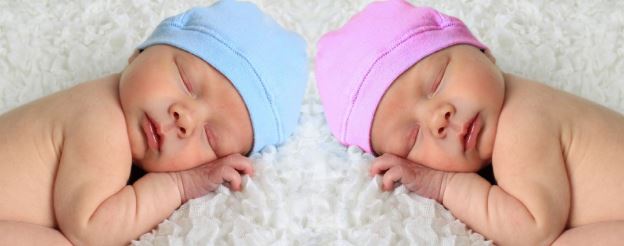It is very tempting for couples to want to have two embryos transferred during an IVF cycle, as it is only natural to assume that doing so increases the odds of achieving that much-wanted pregnancy. But it is very important to stop and consider the potential risks versus any perceived reward.
Transferring more than one embryo at a time does not double or triple the chance of achieving a pregnancy. In fact, it only increases the chance of pregnancy by approximately 3-5%, compared to transferring a single embryo. However, if a pregnancy is achieved with a multiple embryo transfer, it is significantly more likely that this will also be a multiple pregnancy. If a woman achieves a pregnancy after transferring more than one cleavage stage (Day 2-3) embryo, the likelihood that she is pregnant with twins is around 20-25%, and this is significantly higher again with blastocyst stage (Day 5) embryos.

Cartoon courtesy of: Humoresque Cartoons
A couple wanting to begin or extend their family generally consider a twin pregnancy as a blessing, as they can complete their family in one go and minimise the need for further treatments in the future. And whilst this can certainly be true, the outcomes are not always the joyous, safe delivery you would hope for.
Risks Of Multiple Pregnancies
Multiple pregnancies come with a cost, and this is the reason for taking such a conservative and cautious approach – as there are risks to both mother and her children. These risks to the child include; higher incidence of miscarriage or premature delivery – with 40-60% of twins requiring admission to the special care nursery and an increased risk of low birth weight. These risks should not be taken lightly as in turn this can result in an increased risk of cerebral palsy, prolonged hospitalisation, intellectual disabilities, respiratory distress, visual issues, digestive disorders, hearing loss, jaundice, bleeding in the brain, neonatal death, and increased risks in adulthood such as adult death from heart disease.
The risks to the mother include an increased risk of gestational diabetes for the mother, pre-eclampsia and mortality. The mortality (death) rate is doubled for women pregnant with multiples and the death rate for twins is six times higher than that for singletons.
As a fertility clinic operating under Australian guidelines and codes of practice, Fertility Solutions must minimise the incidence of multiple pregnancy. We must also provide evidence to accrediting bodies that multiple pregnancy rates are monitored, and appropriate policies are implemented in order to reduce the incidence of multiple pregnancies for all types of treatment cycles – not just IVF.
That is why Fertility Solutions has strict policies in regards to the number of embryos for transfer (ET), or the numbers of follicles present during treatments such as Intra-Uterine Insemination (IUI) or Ovulation Induction (OI). For example, it is clinic policy to only transfer a single embryo for a woman under the age of 36 who has had a previous pregnancy and/or has had up to 2 embryo transfers at any clinic. If you would like to discuss this further, more information is available from either your fertility specialist or nurse. We can be reached at 1300 337 845 (1300 FERTILITY).

